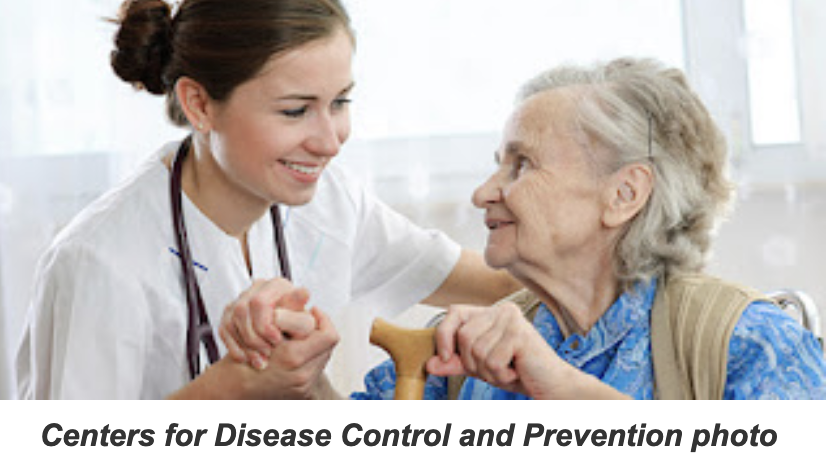59% of residents, just 16% of staff in Ky. nursing homes have had Covid-19 booster shots; both rates slightly above national rates

Kentucky Health News
While Kentucky nursing homes’ Covid-19 booster rates are higher than the national rates, many staff and residents remain vulnerable to the disease because over 80% of staff and nearly 40% of residents have not received booster shots.
In the week ending April 9, there were 116 new confirmed cases of Covid-19 among Kentucky nursing-home residents, or 5.9 cases per 1,000 resident-weeks; there were 54 cases among staff, or 2.8 cases per 1,000, according to the Nursing Home Vacciation Data Dashboard of the Centers for Disease Control and Prevention.
Through the week ending April 2, reports from about half of Kentucky’s nursing homes showed that 59% of their residents were up to date with their Covid-19 vaccines, which means they had received the latest bivalent booster dose or have completed the primary series of vaccines in the last two months. This was higher than the nationwide rate of 54%.
Staff rates were much lower. In the week ending April 2, 16% of Kentucky’s nursing-home staff were up to date with their Covid-19 boosters, which was still higher than the national rate of 12%.
That said, 89% of Kentucky nursing-home residents and 42.5% of staff have completed their primary Covid-19 series and received an additional primary or booster shot – just not the recommended bivalent one.
The CDC recommends that people stay up to date with Covid-19 vaccines by completing a primary series and receiving the most recent booster dose for their age group.
At this point in the pandemic, much of the effort to get nursing home residents and staff boosted falls to the facilities.
Susan Dunlap, spokesperson for the Kentucky Department for Public Health, told Kentucky Health News that the department still offers several services to help nursing homes and other long-term care facilities promote Covid-19 vaccinations among residents and staff.
“KDPH staff are available to provide in-service education and training to residents and staff regarding the safety and benefits of being vaccinated,” Dunlap said in an email. “Regional infection preventionists can assist facilities with obtaining vaccines and conducting vaccine clinics by connecting facilities with community provider partners such as pharmacies and other healthcare facilities. Staffing support for vaccine clinics is also available to long-term care facilities by request through a KDPH Nurse STRIKE Team comprised of five nurses who can assist with clinic logistics and vaccine administration.”
While residents and staff in Kentucky’s nursing homes are still getting Covid-19, there are fewer deaths from it.
In the week ending April 9, the Covid-19 death rate among residents in Kentucky nursing homes was 0.1 per 1,000 residents. But even though this rate is low, it’s important to remember that seniors in nursing homes are among the most vulnerable to the disease.
Virus found by swabbing floors: A recent study found that one way to detect the coronavirus in congregate settings is to do regular floor swabs.
The study, published in The New England Journal of Medicine in February, found that regularly sampling floor surfaces for the virus in long-term care homes could improve detection of it.
The researchers sampled floor surfaces in multiple locations weekly in 10 long-term-care homes between September 2021 and November 2022 and analyzed the samples for the presence of the virus.
They found that “the percentage of positive swabs increased in the days and weeks before an outbreak was declared [and] the percentage of positive swabs also decreased in the days and weeks after an outbreak was declared.”
“Swabbing the built environment, similar to wastewater surveillance, may provide another tool for infection prevention and control for combating Covid-19 in congregate settings,” they write. “Future studies evaluating the implementation and generalizability of this approach are needed.”